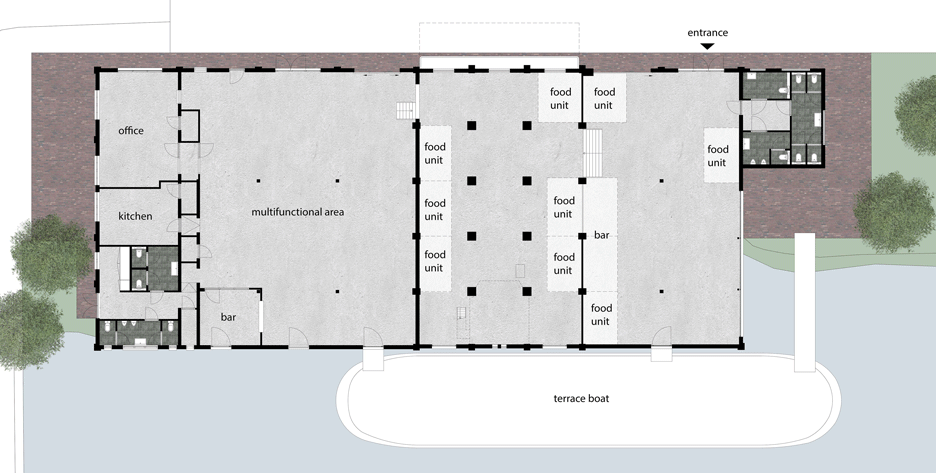Wenink Holtkamp Architecten transforms old Dutch grain silo into street-food market
Eindhoven studio Wenink Holtkamp Architecten has converted a former grain silo in the Dutch city of Deventer into a community food hall overlooking the harbour (+ slideshow).
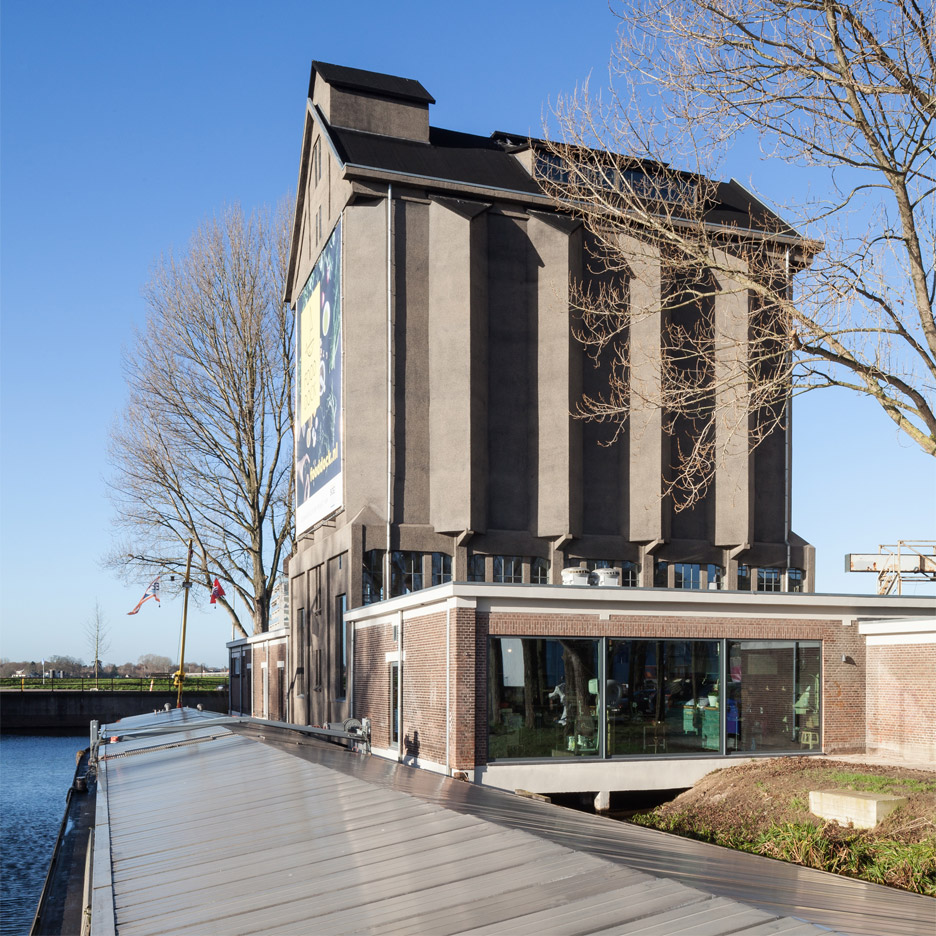
The Zwarte Silo – which translates as Black Silo – was designed by local architect architect Maarten van Harte and constructed in 1923 on a site adjacent to Deventer's harbour.
Its distinctive black exterior is the result of a layer of bitumen added later to resolve ongoing moisture problems.
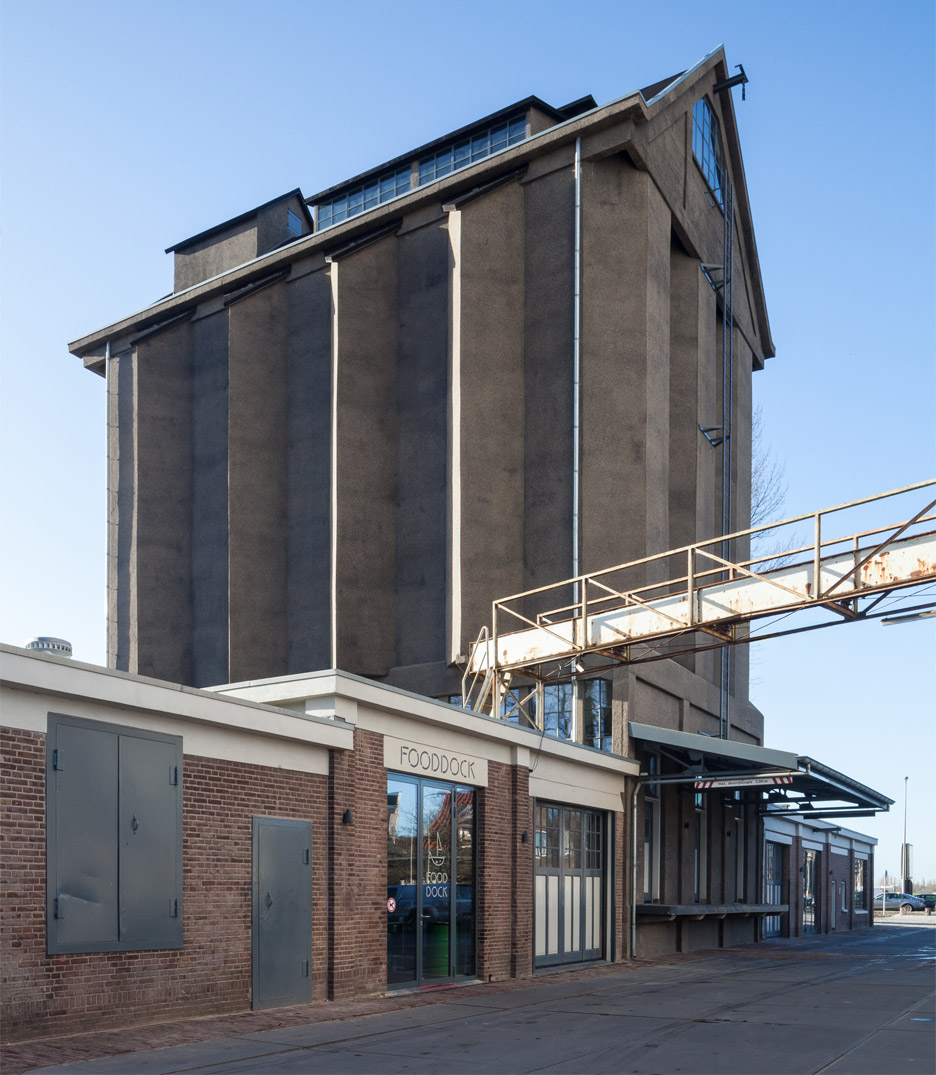
Wenink Holtkamp Architecten was commissioned by a foundation specialising in repurposing historically significant buildings to oversee the transformation of the silo, which had been out of use since the early 1990s.
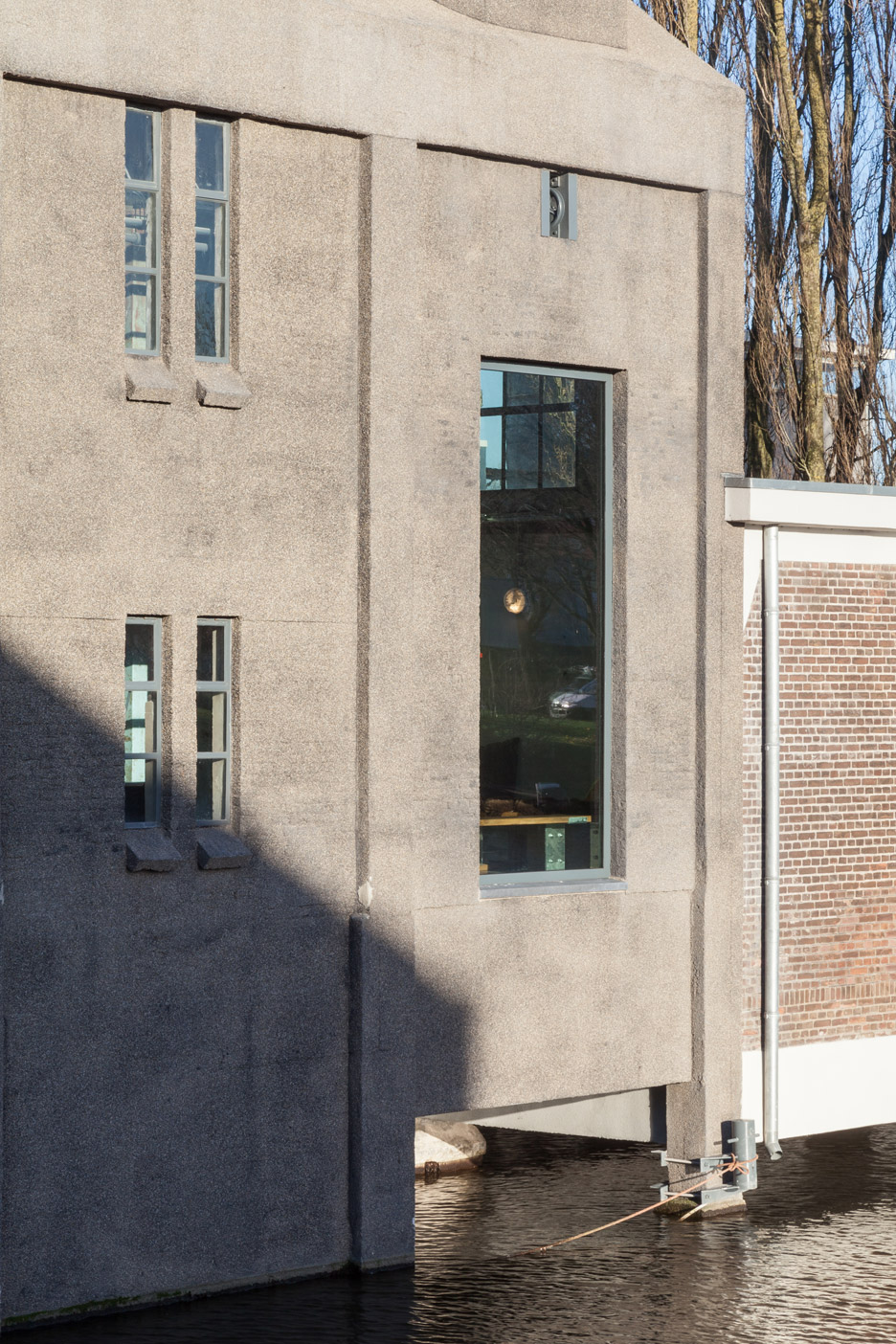
The project aimed to reinforce the building's connection with the harbour and to give the former industrial structure a new purpose that helps to reestablish it as a focal point of the community.
It now provides a venue for street-food vendors to sell their produce.
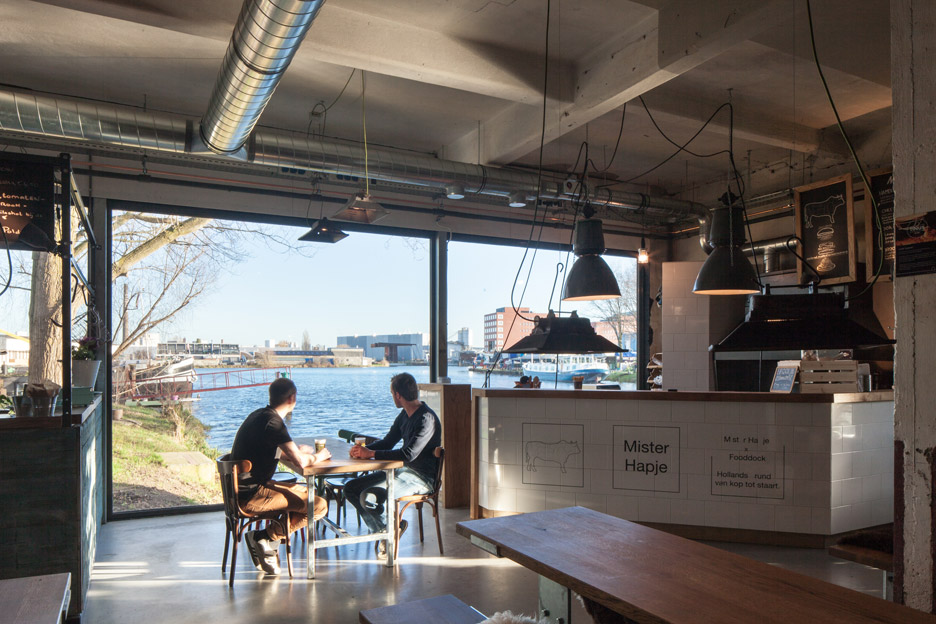
"The Zwarte Silo is an important iconic building which marks the beginning of the rest of the harbour area," architect Jan-Peter Wenink told Dezeen.
"For this reason it lends itself perfectly well for a large public function that attracts people from the region and bring liveliness into the area."
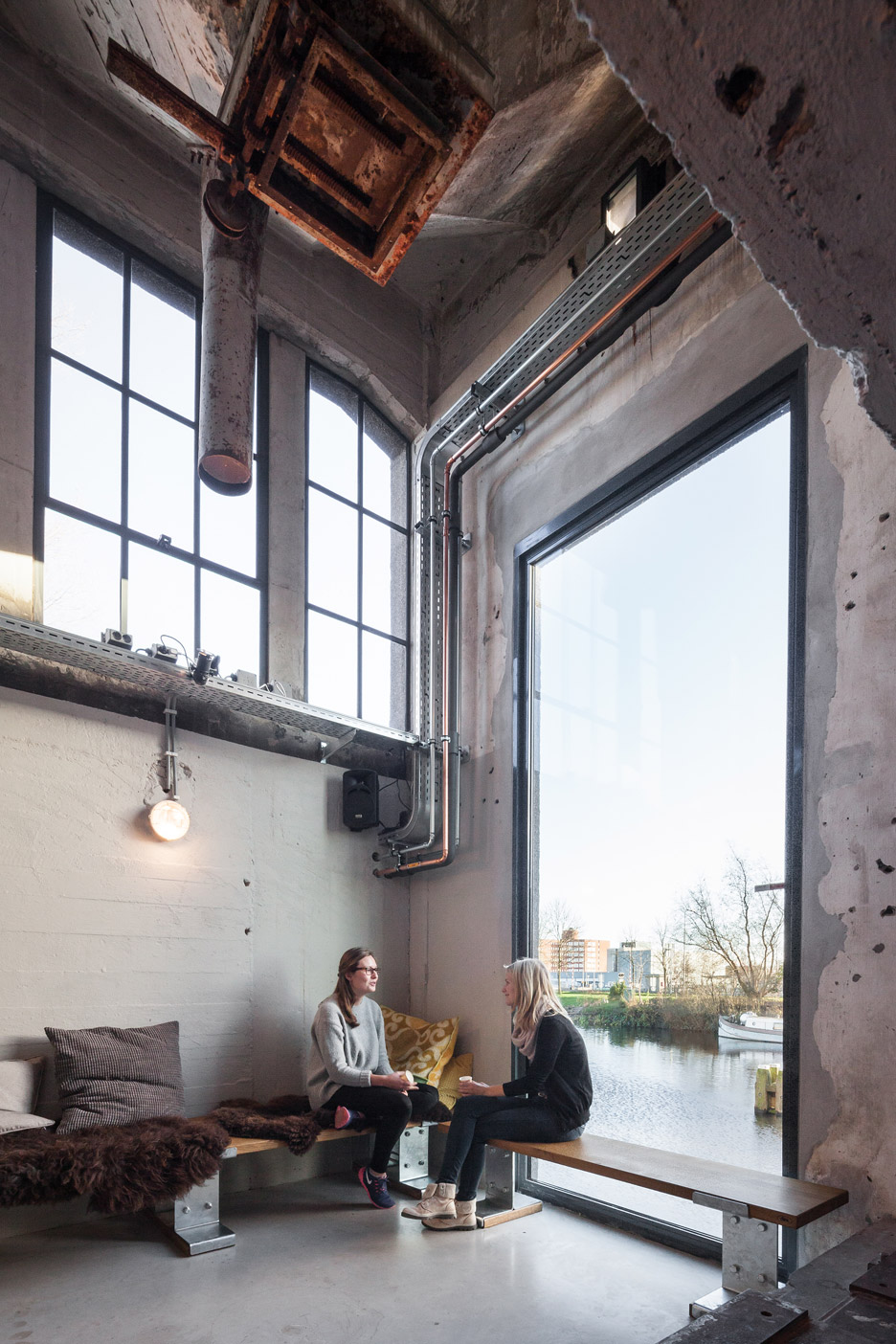
The building's tall silo was originally used for storing grain, so provided a large space suitable for conversion into a market hall. Thirty load cells that descend from the ceiling help to retain a sense of the silo's heritage.
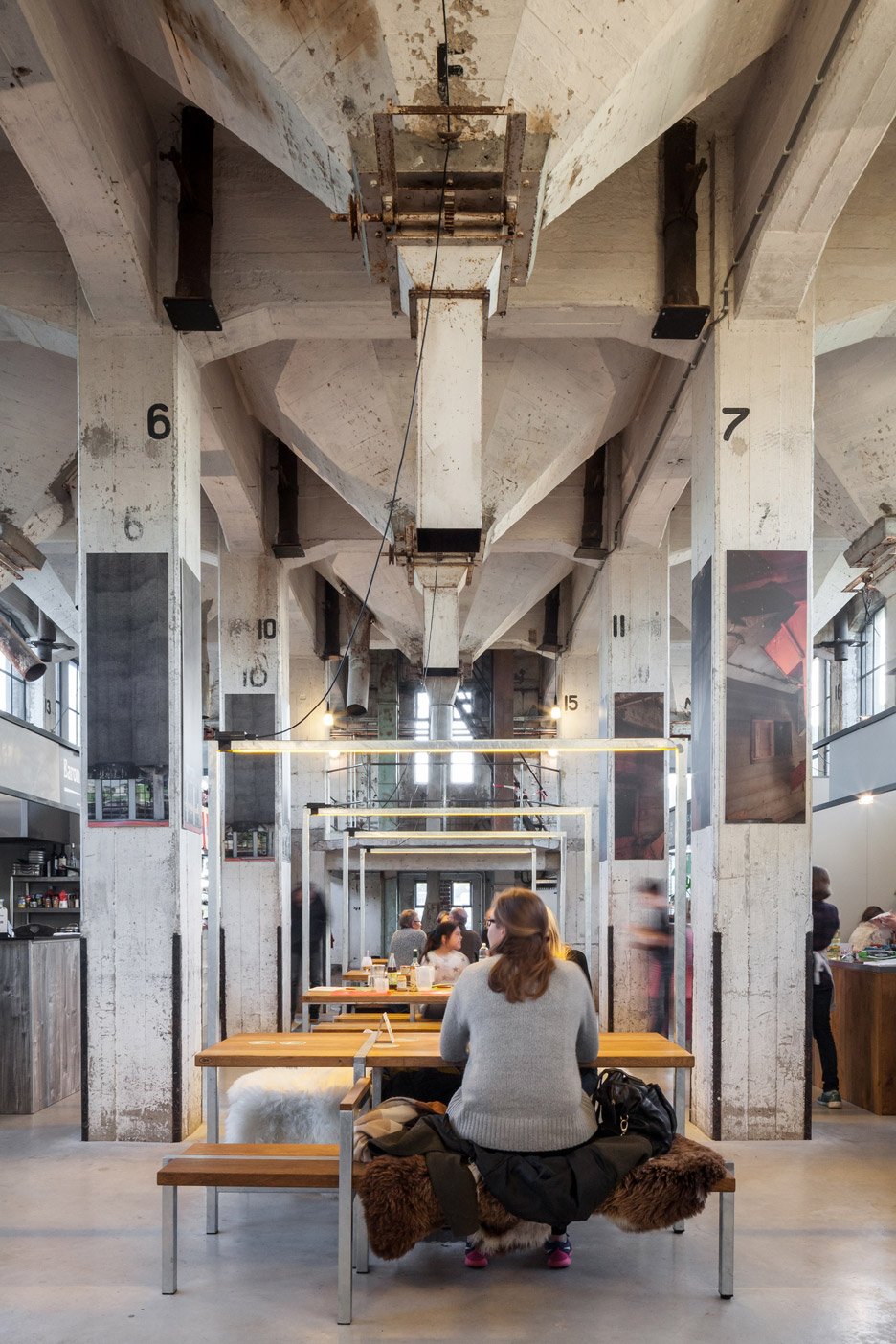
"We tried to stay as close as possible to the authentic character of the building and preserve most of the authentic details," Wenink added. "We wanted to keep the building as raw as possible."
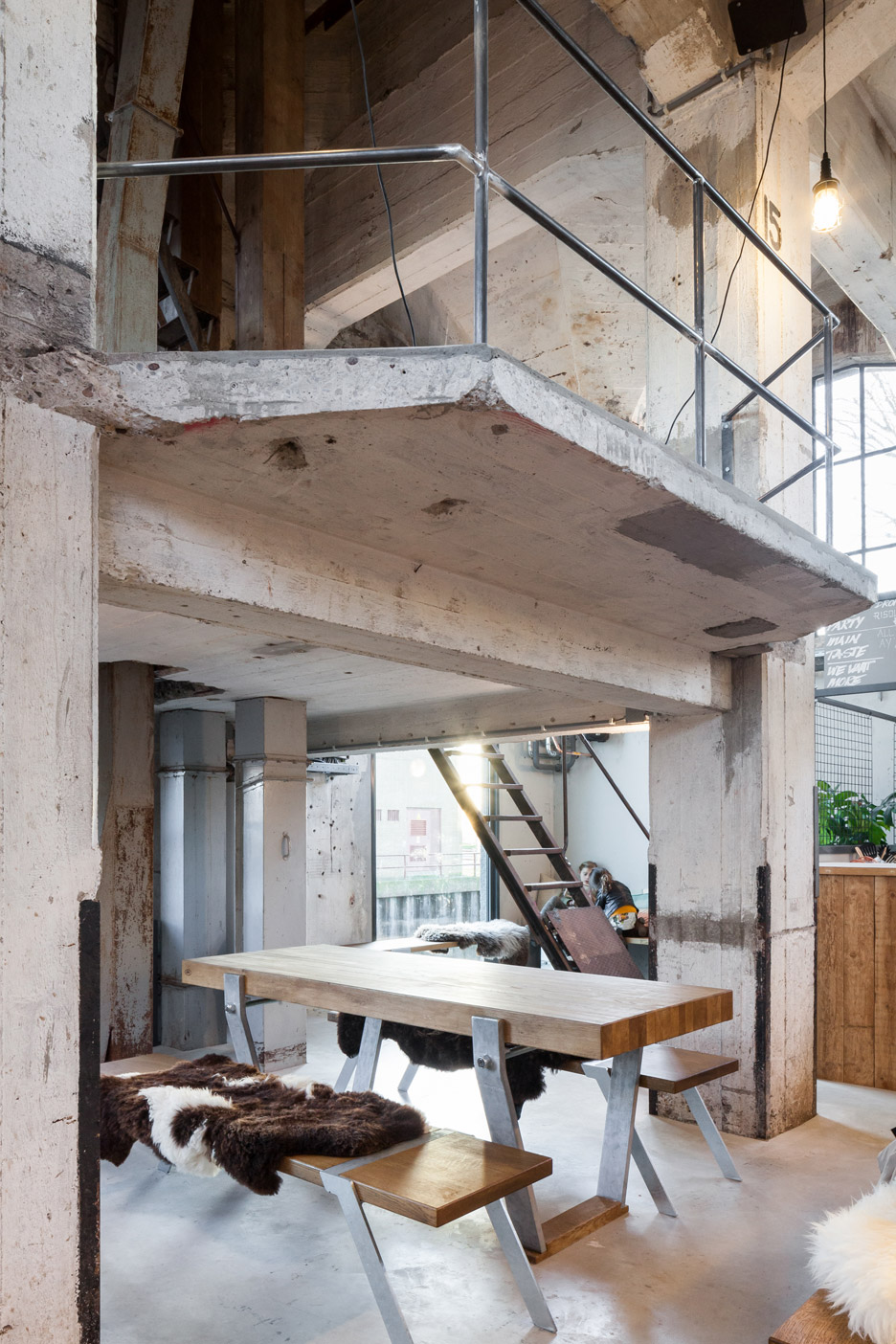
The key interventions made by the architects include the introduction of several doors and windows with slender steel frames that enhance the facility's connection with its neighbourhood.
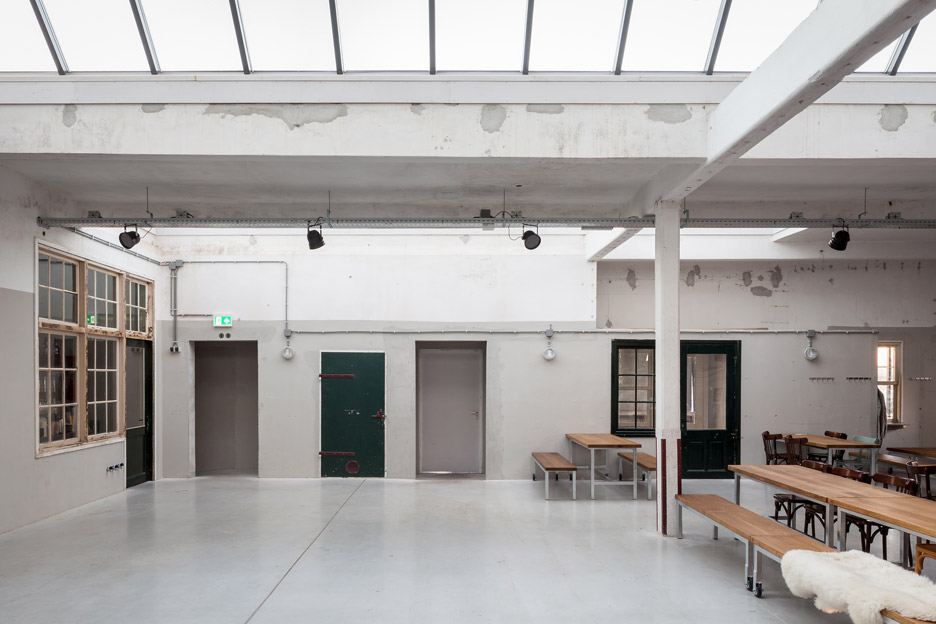
"The new function asks, in contrast to the closed character of the grain storage, for a more open character that opens itself to his surrounding area," explained Wenink.
"For this reason we have made a large of nine-metre opening on the east side which gives an astonishing view over the harbour area."
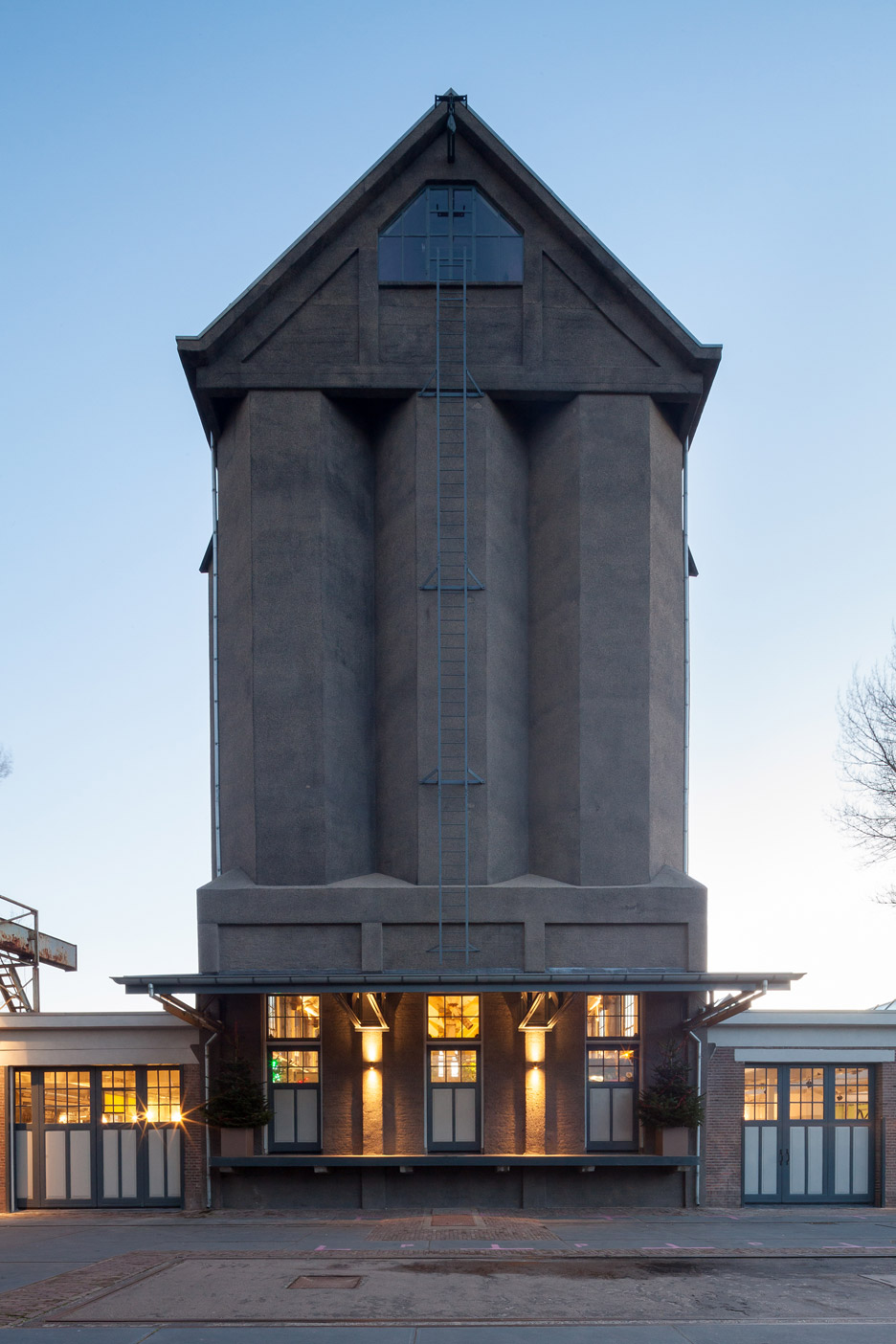
In addition to the main silo, the project team also redeveloped the two low brick volumes on either side, which previously housed a salt storage area and a warehouse and office.
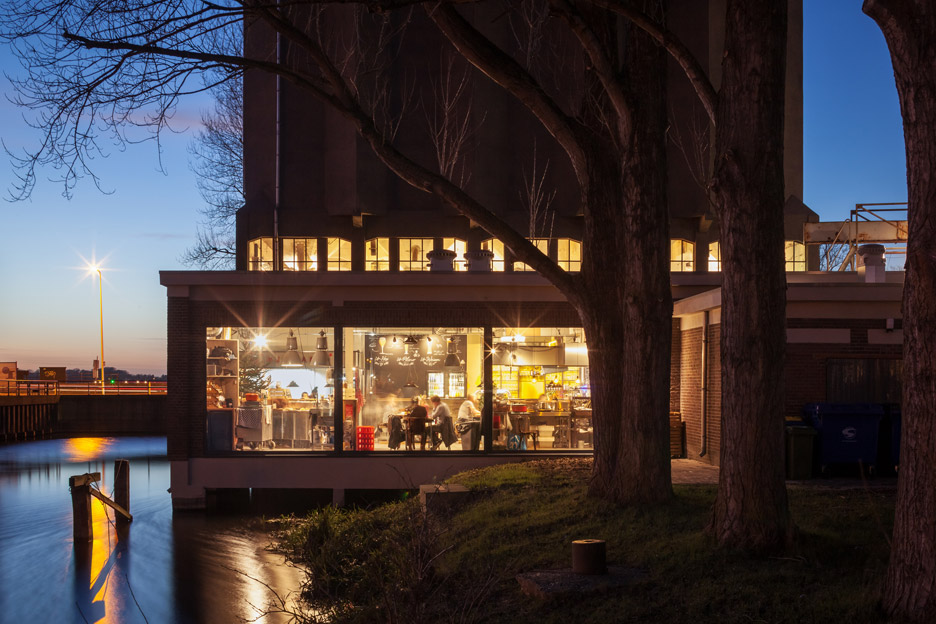
The original separation of the spaces is retained, with one area accommodating further food stalls and a bar, while the other contains a multipurpose space used for events. Long, pitched skylights flood this room with natural light.
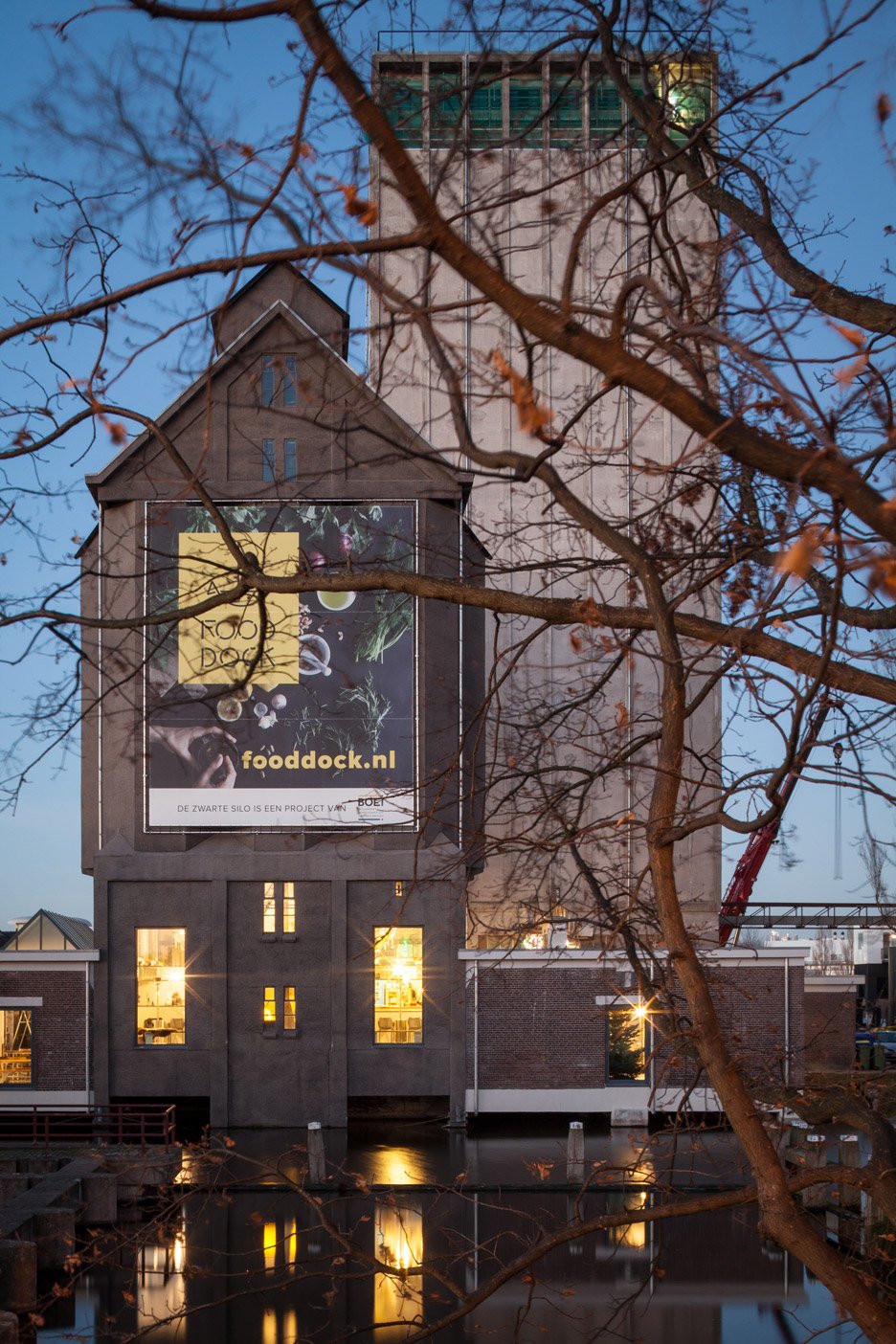
The reintroduction of original openings in the facade provided more opportunities for glazing.
These include two large doorways on the north facade, one of which serves as the new entrance to the building.
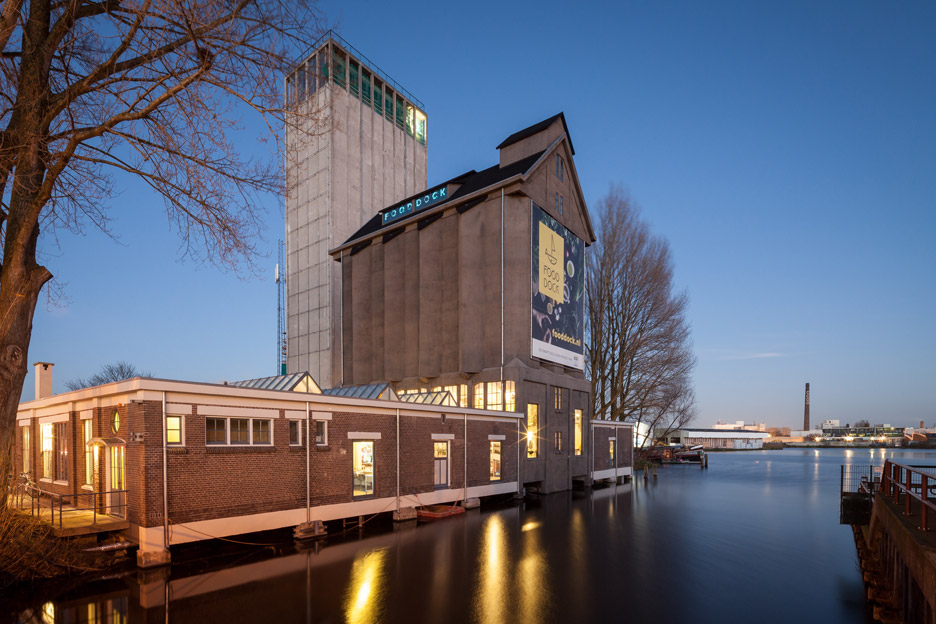
Similarly, Thomas Heatherwick is converting an old grain silo into an art gallery that is set to open later this year in Cape Town, South Africa, while students at Lund University in Sweden have proposed converting a disused silo in the city of Malmö into a crematorium.
Photography is by Tim Van de Velde.
